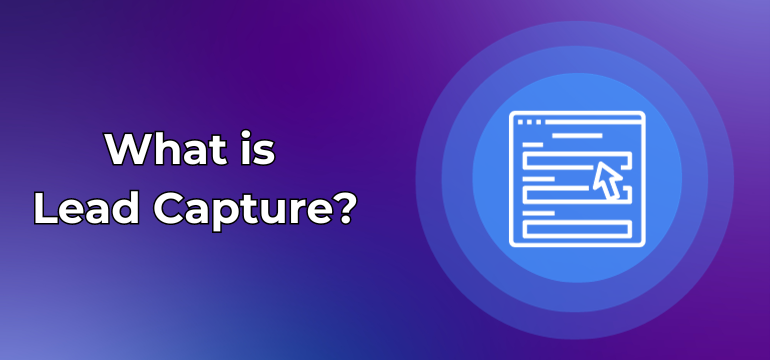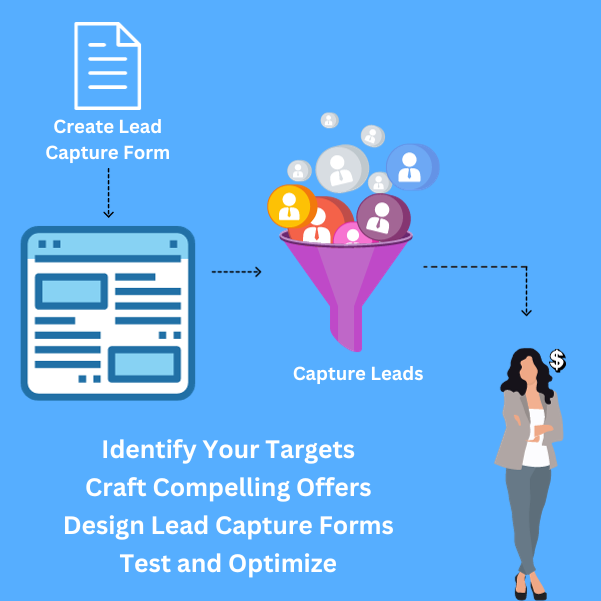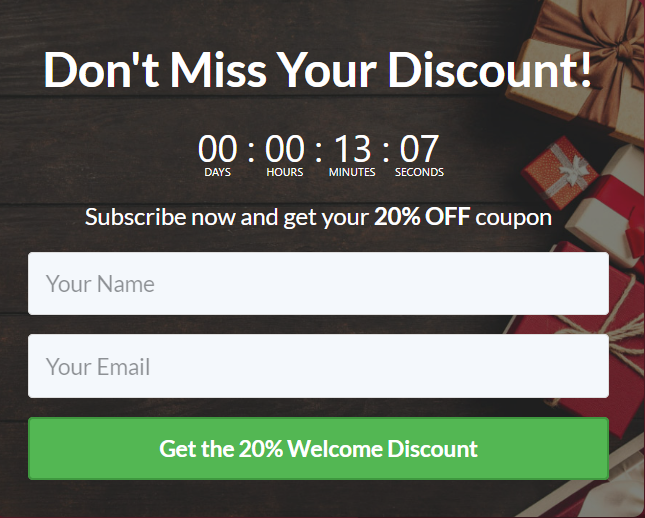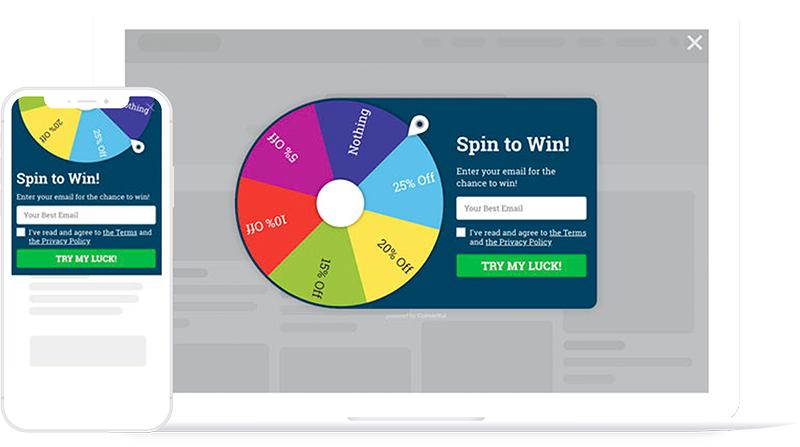What is Lead Capture? Best Practices and Tips
In today’s highly competitive business landscape, generating quality leads is an essential aspect of success. To stay ahead of the competition, businesses must invest in an effective lead capture strategy. But first, what is lead capture? In this article, we’ll explore the importance of lead capture, how to create high converting lead capture forms, and the tools and techniques that can help you generate a constant stream of high quality leads.

Understanding Lead Capture: The Basics
Expanding your customer base is a key outcome of any successful marketing campaign, often achieved through lead capture. A successful lead capture strategy comes from identifying and understanding your target audience, crafting compelling offers, designing high converting lead capture forms, and testing and optmizing your campaign to maximize your conversion rate.
Definition of Lead Capture
The act of gathering contact information and other relevant information from potential customers is known as lead capture. Various methods can be employed for lead capturing, such as lead capture form, lead capture page, and lead generation chatbot. For instance, creating an irresistible offer and presenting it through a lead capture form, on a dedicated landing page, can significantly increase your chances of capturing qualified leads.
Importance of Lead Capture
For businesses aiming to establish and maintain relationships with potential customers, an effective lead capture strategy is key. By implementing a good lead capture system, businesses can generate quality leads that are likely to convert into paying customers, ultimately leading to increased sales and revenue growth.
Key Components of an Effective Lead Capture Strategy
Four key components form the foundation of an effective lead capture strategy:
- Comprehending your target audience: By identifying your target audience, you can tailor your lead capture campaigns to attract the right prospects, which will increase your chances of generating quality leads.
- Devising compelling offers: Crafting compelling offers, such as discounts or valuable content, will entice potential customers to provide their information in exchange for the offer.
- Designing lead capture forms with high conversion rates: Not only do lead capture forms need to capture leads, but they also need to convert. Optimizing your lead capture forms will help ensure that you capture a high number of leads, ultimately improving your conversion rate and growing your customer base.
- Test and Optimize your Campaigns: Keep in mind that an effective lead capture strategy extends beyond just generating leads. Continually testing and optimizing your lead magnet campaigns, as well as nurturing the leads you’ve captured, will help drive even better results in the long run.

By staying focused on these key components and refining your approach, you’ll be well on your way to creating a successful lead capture strategy that fuels your business’s growth.
Identifying Your Target Audience
Comprehending your target audience is vital to tailor your lead capture strategy, attract the right prospects, and increase conversion rates.

By evaluating demographic characteristics such as:
- age
- gender
- income
- marital status
- family size
- education
you can gain insight into the group of people most likely to be interested in your products or services. This knowledge allows you to tailor your marketing efforts and messages to effectively reach and engage your target audience, increasing your chances of capturing quality leads.
In addition to demographics, it’s also important to consider the psychographics of your target audience, such as their interests, values, and motivations. Gaining a deep understanding of your audience’s pain points and preferences will enable you to create more compelling offers and lead capture forms that resonate with them on an emotional level. As a result, your lead capture campaigns will be more effective in generating high-quality leads that are more likely to convert into paying customers.
Crafting Irresistible Offers
Devising appealing offers forms a significant part of the lead capture strategy. By offering something of value in exchange for contact information, you can entice potential customers to engage with your business and provide their details. Examples of irresistible offers include free ebooks, industry reports, templates, or discount codes. When designing your offer, it’s important to consider the following principles: scarcity, positive outcomes, addressing the target audience’s problems, reducing risk, motivating immediate action, and using clear language.
A great example of an irresistible offer is a limited-time discount code. By providing a sense of urgency through scarcity, visitors are more likely to act quickly and take advantage of the offer before it expires. This not only increases the likelihood of capturing a lead but also creates a sense of excitement and anticipation around your product or service.

Designing High-Converting Lead Capture Forms
As part of a successful lead capture strategy, it’s vital to design lead capture forms that have high conversion rates. Form optimization can have a significant impact on the number of leads you generate, so it’s important to pay close attention to the design and layout of your forms. Some best practices for designing high-converting lead capture forms include keeping the form as concise as possible, asking only essential questions, and simplifying the input fields.
In addition to form length and layout, optimizing the user experience is crucial for maximizing lead generation. Consider the following measures to improve user experience in lead capture forms:
- Positioning the form next to relevant content
- Enhancing the design quality
- Optimizing form loading speed
- Using placeholder ‘hint’ text to guide users through the data input process
When it comes to lead capture forms, there are a few different types to consider. Some businesses choose to use simple forms that only request an email address, while others may require more detailed information such as phone numbers, job titles, and company names. The amount of information requested should be carefully balanced to avoid overwhelming potential customers while still gathering enough data to qualify leads.
Test and Optimize your Lead Capturing Campaigns
When it comes to lead capturing campaigns, it's not enough to simply create and launch them. To truly maximize their effectiveness, you need to test and optimize them. This process involves tracking and analysing data, making adjustments, and continuously improving your campaigns to ensure you're capturing the most valuable leads.

When testing your lead capturing campaigns, there are several key metrics you should track:
- Conversion Rate: This metric measures the percentage of visitors who take the desired action, such as filling out a form or making a purchase. A higher conversion rate indicates that your campaign is effectively capturing leads.
- Click-Through Rate (CTR): The CTR measures the percentage of people who click on your campaign's call-to-action. A higher CTR indicates that your campaign is compelling and engaging.
- Bounce Rate: The bounce rate measures the percentage of visitors who leave your campaign without taking any action. A high bounce rate may indicate that your campaign is not effectively capturing the attention of your audience.
- Cost per Lead (CPL): The CPL measures the cost of acquiring each lead. By tracking this metric, you can determine the effectiveness and efficiency of your lead capturing campaigns.
Remember, testing and optimization are ongoing processes. Continuously monitor and analyze your campaigns' performance, make data-driven adjustments, and strive for continuous improvement. By doing so, you can maximize the effectiveness of your lead capturing campaigns and drive better results for your business.
Best Practices for Implementing Lead Capture Techniques
For a successful implementation of lead capture techniques, focusing on method diversification, personalizing experiences, and continuous campaign testing and optimization is crucial.
Diversifying Lead Capture Methods
Employing a range of lead capture methods can broaden your audience reach and enhance your potential for capturing quality leads. Some examples of lead capture methods include popups, chatbots, landing pages, and gamification widgets. Each of these methods offers unique advantages and can be tailored to suit your specific lead capture goals and target audience.
For instance, popups can be highly effective at capturing leads when used in conjunction with engaging content and personalized messaging. Lead generation chatbots, on the other hand, can provide a more interactive and personalized experience by engaging potential customers in real time, guiding them through the lead capture process, and quickly qualifying leads based on their responses. By diversifying your lead capture methods and combining them strategically, you can maximize your lead generation efforts and ensure a steady stream of high quality leads for your business.
Personalizing Lead Capture Experiences
Personalization of lead capture experiences entails tailoring the lead capturing process to cater to the unique needs, preferences, and behaviors of users. This can be achieved by:
- Leveraging data and insights about the user to create a more tailored and relevant experience
- Customizing the lead capture form
- Providing personalized content or incentives
- Utilizing dynamic messaging based on the user’s previous interactions or characteristics
All of these strategies can contribute to a more personalized lead capture experience.
Continuously Testing and Optimizing
To ensure the effectiveness of your lead capture campaigns and enhance lead generation, continuous testing, and optimization is pivotal. A/B testing, for example, can help you identify which form designs, offers, and message resonate best with your target audience. By constantly evaluating the performance of different elements and iterating on your lead capture strategies, you can refine your approach to lead magnets and drive better results.
Here are some tips for A/B testing:
- Setting clear objectives
- Selecting appropriate variables
- Ensuring an adequate sample size
- Consistently testing and improving based on results

Top Lead Capture Software
Leveraging the right software is essential for executing a successful lead capture campaign. Top lead capture software include CRM platforms, landing page builders, and popup and form creation tools. These tools can help streamline your lead capture process, making it easier to manage and organize lead information, design high-converting landing pages, and set up an effective lead capturing system. To create a great lead capture campaign, it’s essential to choose the right combination of tools that suit your business needs.
CRM Platforms
CRM platforms play a significant role in lead capture by helping businesses manage and organize lead information, streamline the lead nurturing process, and improve conversion rates. Therefore, you need to know how to choose the right CRM for your business Some of the top CRM platforms for lead capture include:
- Platformly offers a powerful CRM that can serve as the central hub for all your marketing activities. It not only provides email marketing and automation features, but also offers a user-friendly interface with a drag-and-drop system for creating emails, landing pages, and marketing automation sequences. While Platformly is primarily aimed at small to medium-sized businesses, it is packed with all the essential features that larger competitors offer, making it a cost-effective choice.
- HubSpot is a popular choice among large businesses. While it may come with a higher price tag compared to other CRM platforms, it delivers in terms of features and functionality. In addition to CRM capabilities, HubSpot offers a landing page builder, form builder, and email marketing automation. This makes it an all-in-one solution for businesses with larger teams and more complex CRM requirements. However, for smaller teams, the price and variety of features offered by HubSpot may be a bit overwhelming.
- Zoho CRM is a CRM platform that caters to businesses of all sizes. It offers a wide range of features, including lead management, contact management, and sales automation. The platform also integrates with other Zoho applications, such as Zoho Campaigns for email marketing and Zoho Desk for customer support.
When selecting a CRM platform for lead capture, it's essential to consider factors such as your business size, budget, and specific requirements. By evaluating these factors and exploring the features offered by different CRM platforms, you can choose the one that aligns with your business goals and helps you effectively manage your customer relationships.
Landing Page Builders
Landing page builders enable businesses to:
- Create high-converting standalone web pages
- Customize forms tailored to specific offers or campaigns
- Simplify the creation and editing of dedicated lead capture pages
- Transform visitors into leads
With their user-friendly interface and a wide array of customization options, landing page builders make it easy to create effective lead capture pages.
Some of the top landing page builders that can help you create stunning and high-converting landing pages include:
- Unbounce is a popular landing page builder known for its user-friendly interface and extensive customization options. With its drag-and-drop editor, you can easily create and modify landing pages without any coding knowledge. Unbounce also offers a wide range of templates and integrations, making it a versatile choice for marketers.
- Instapage is a robust landing page builder that focuses on providing a seamless user experience. It offers a drag-and-drop editor, customizable templates, and advanced analytics to track the performance of your landing pages. Instapage also provides features like dynamic text replacement and AMP landing pages, which can further enhance your conversion rates.
- As mentioned earlier, Platformly is a powerful CRM and marketing automation platform that also offers a landing page builder as part of its suite of tools. With Platformly, you can create and optimize landing pages, track visitor behavior, and integrate with other tools that it offers making it easy to capture leads and nurture them through automated email campaigns.
Popup and Form Creation Tools
Popup and form creation tools assist in designing and implementing various types of lead capture forms, such as multi step forms and gamified experiences. These tools, with their assortment of customization options and targeting capabilities, empower businesses to create engaging and personalized lead capture forms that successfully capture potential customers’ attention and interest.

Some examples of popular popup and form creation tools include:
- Convertful (Our overall top recommendation) is a comprehensive tool that combines popup and form creation with advanced targeting and personalization features. With its user friendly interface, you can create attractive pop ups, welcome screens, scroll boxes, gamification widgets and much more to engage your website visitors. Convertful also provides A/B testing capabilities, allowing you to test different variations of your pop ups to optimize conversion rates. Additionally, Convertful offers various integrations with popular email marketing services, making it easy to sync your leads and automate your marketing campaigns.
- OptinMonster is a powerful tool that allows website owners to create eye-catching popups, slide-ins, and other types of opt-in forms. With its drag-and-drop builder, you can easily customize the design, layout, and behavior of your popups. OptinMonster also offers advanced targeting options, such as exit-intent technology, which displays a popup when a user is about to leave your site. This tool integrates seamlessly with popular email marketing platforms, making it easy to capture leads and grow your subscriber list.
- Poptin offers a wide range of popup and form templates to choose from. With its drag-and-drop editor, you can easily customize the design, layout, and behavior of your popups. Poptin also provides targeting options, allowing you to display popups based on user behavior, demographics, or referral source. This tool integrates with popular email marketing services, enabling you to capture leads and automate your follow-up processes.
Real-Life Examples of Successful Lead Capture Strategies
Successful lead capture strategies in real-life scenarios can offer valuable insights into the effectiveness of diverse techniques and good practices. By examining the successes of other businesses, you can identify what works and what doesn’t, and apply these lessons to your lead capture campaigns.
In this section, we’ll explore two real-life examples of successful lead capture strategies, showcasing the power of effective lead capture techniques and demonstrating how they can drive significant results for businesses of all sizes and industries.

Example 1: Company A
Company A effectively uses a multi step lead capture form with a compelling offer, resulting in increased conversion rates and a growing customer base. Company A, by breaking the form into smaller steps or form fields, lessens resistance by making it easier for users to provide their contact details, resulting in increased leads and driving significant growth in both their customer base and revenue.
Example 2: Company B
Company B leverages personalized popups and chatbots to engage potential customers, leading to higher lead generation and improved user experience. Employing targeting and triggering techniques, Company B presents their popups to the right audience at the right time, thereby enhancing the company's website chances of capturing quality leads.
At the same time their chatbot, provides a more interactive and personalized experience for site visitors by engaging potential customers in real time, guiding them through the lead capture process, and quickly qualifying leads based on their responses. By diversifying their lead capture methods and combining them strategically, Company B has been able to enhance the number and quality of their website leads and drive significant business growth.
Summary
In summary, effective lead capture strategies are essential for businesses looking to grow their customer base and drive long-term success. By understanding the basics of lead capture, identifying your target audience, crafting irresistible offers, and designing high converting lead capture forms, you can maximize your lead generation efforts and drive significant results. With the right marketing tools, techniques, and a commitment to continuous improvement, you can create a successful lead capture strategy that fuels your business’s growth and helps you stay ahead of the competition.


